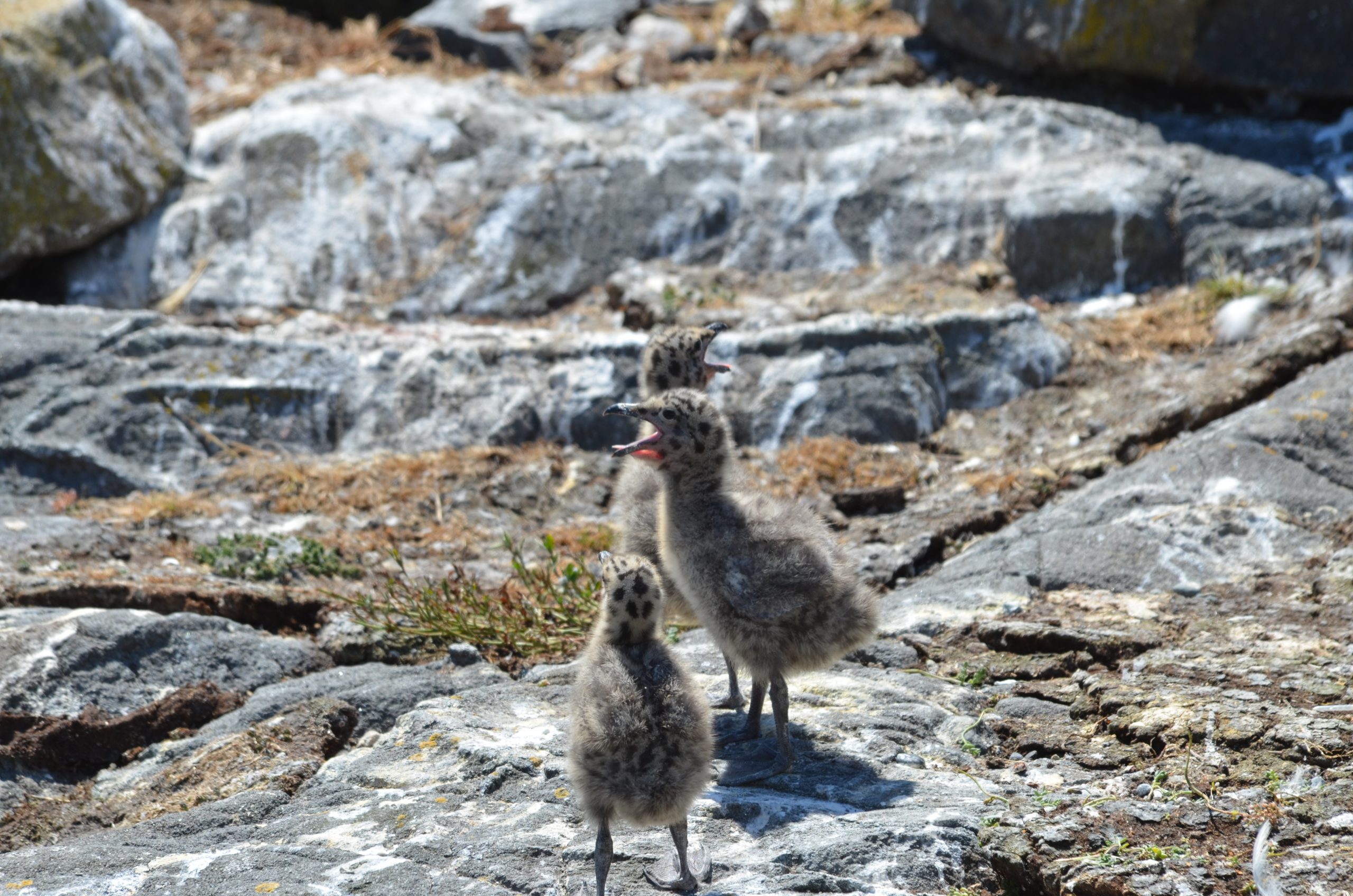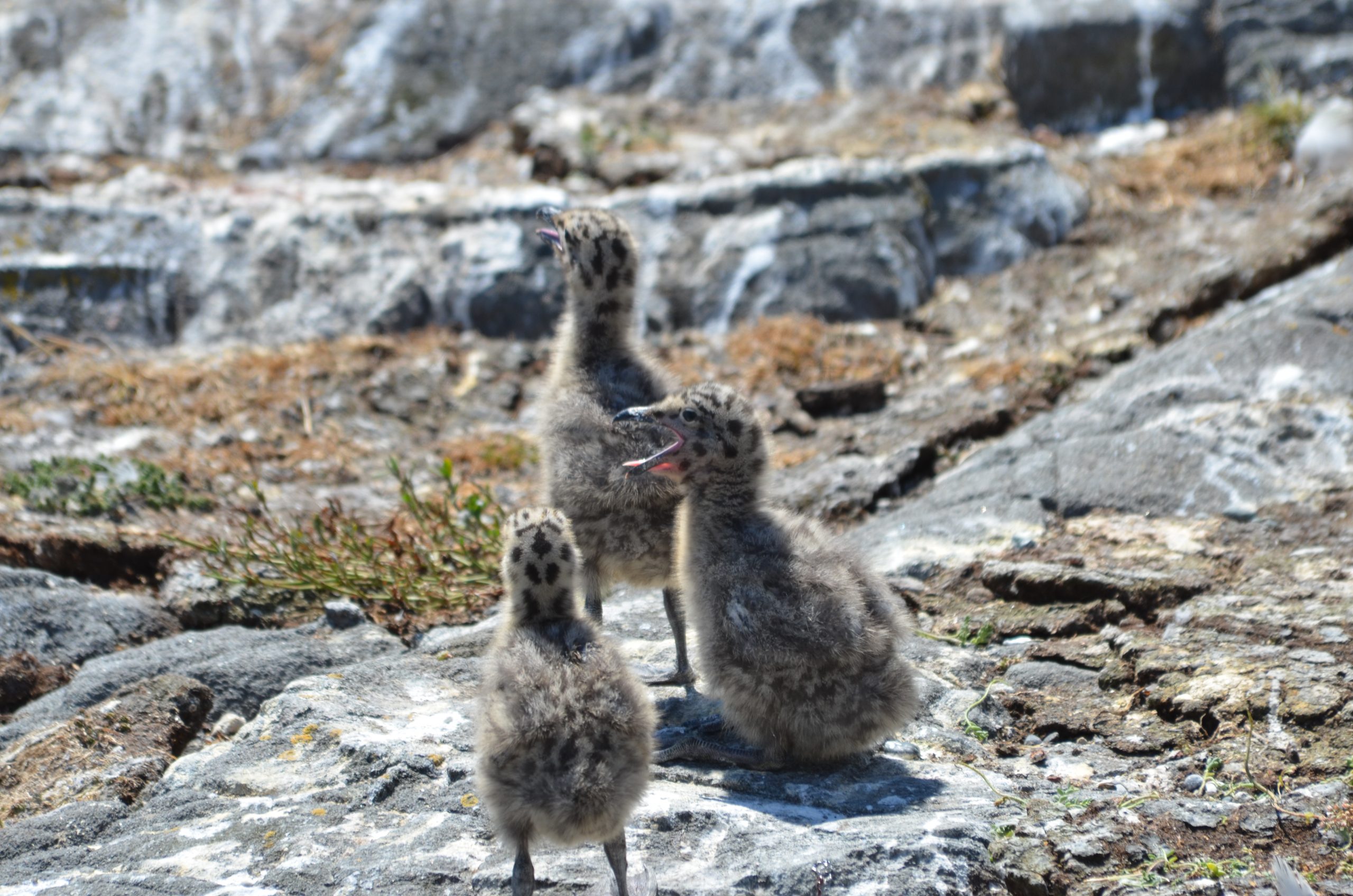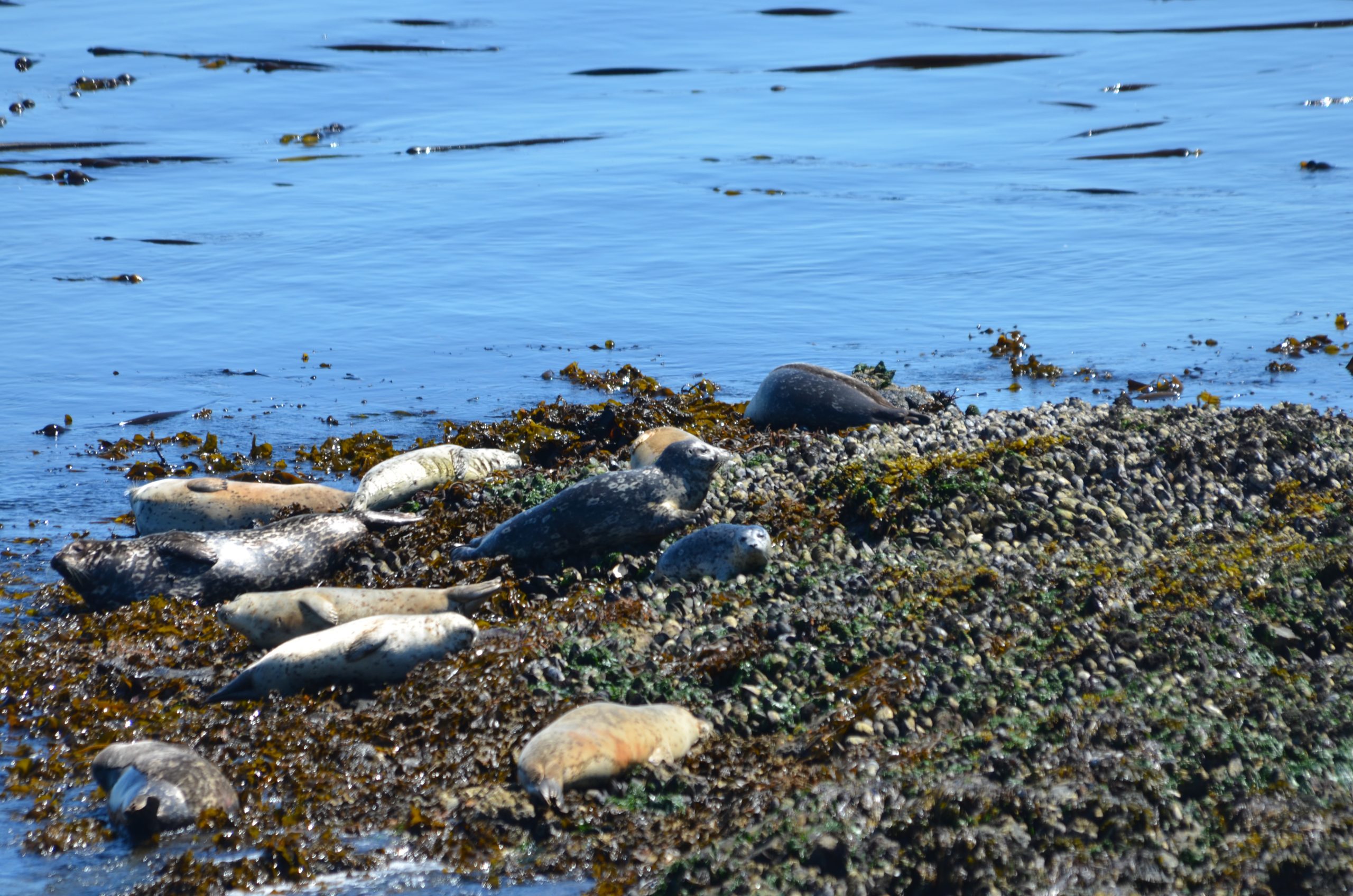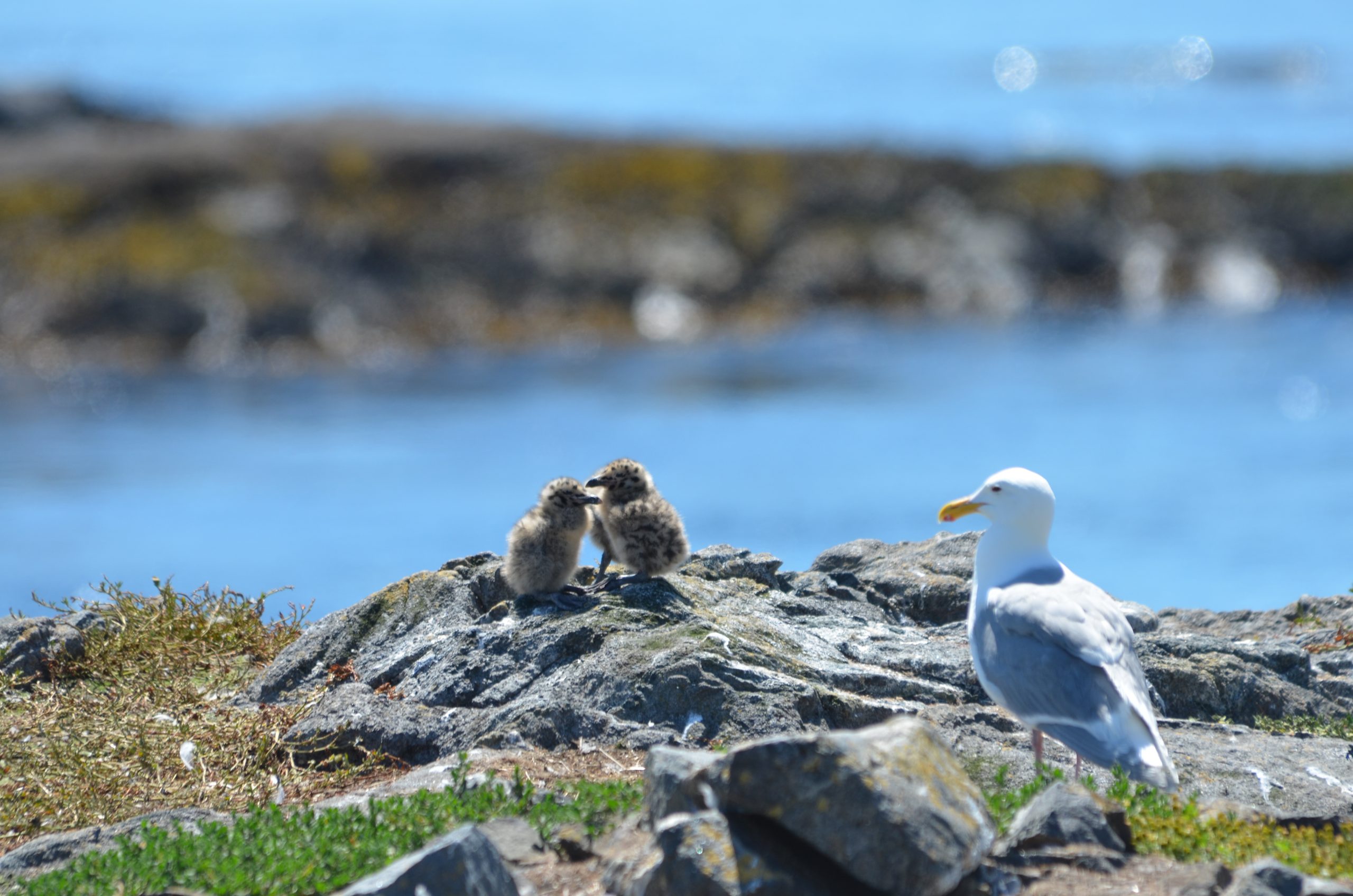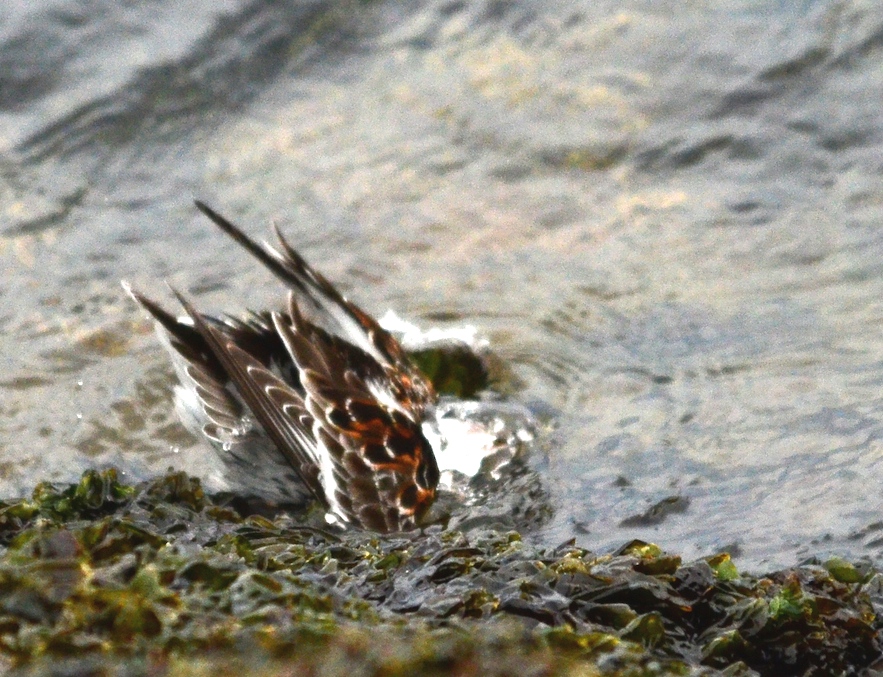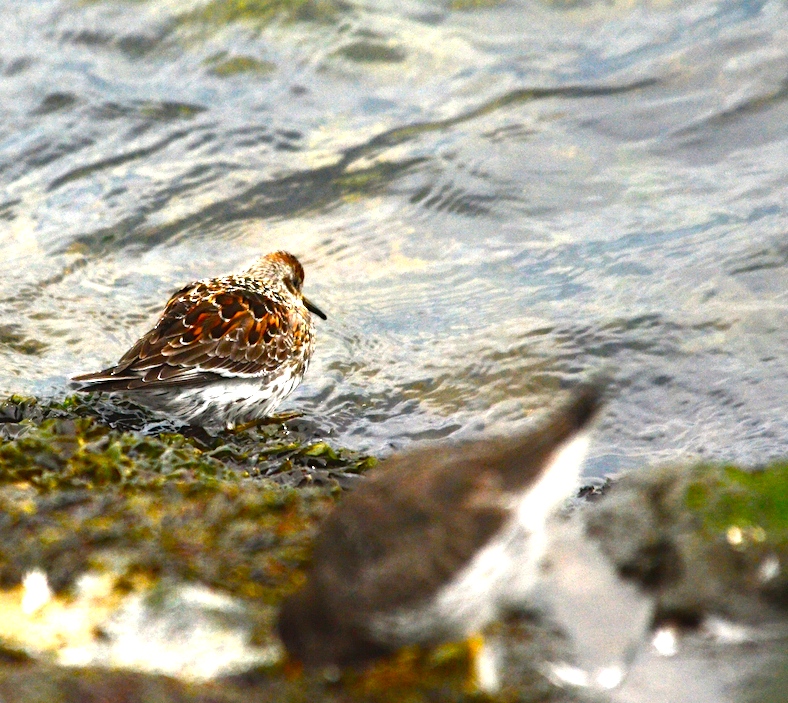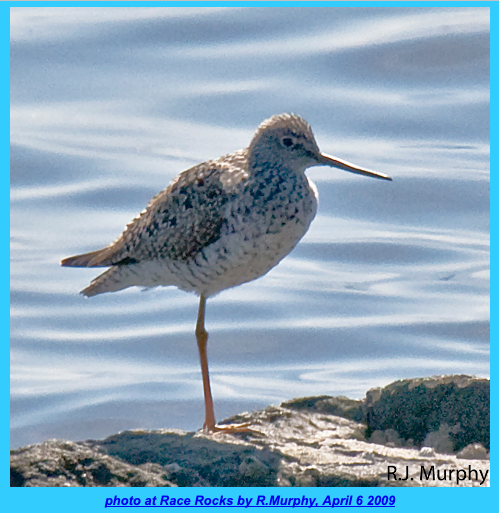Today’s Weather:
- Sky clear, blue
- Visibility 15+ NM
- Wind 15-20 knots W
- Sea state: rippled, whitecaps
Marine Traffic/Visitors:
- Today Greg visited for maintenance tasks
- Quite a few pleasure crafts out today, but only a few passing through the reserve with no issues.
- A steady trickle of whale watching boats today, especially just outside of the reserve where we spotted a humpback whale midday. We have been observing quite a few vessels cutting the paths of whales moving through the area, or driving over the location where the whales last surfaced.
Ecological Observations:
- Many shorebirds migrating this week. Today we counted 150 black turnstones! There are a handful of surfbirds mixed into the flock, which has been resting on the rocky beach area on the east side of the island.
- The seagull chicks are growing quickly! They are starting to develop flight feathers and strengthening their wings by flapping them as if they are trying to fly. The last of the eggs seem to have hatched now. We noticed that one egg did not hatch in a nest where the eggs were stolen and the seagull had to re-lay later than usual. As the little ones become more adventurous their parents become more protective, diving at our heads and sometimes attacking each other if another gull gets too close.
- We have been observing the pigeon guillemots pairing behaviors and wondering if they will nest here this year. We have spotted them carrying fish into crevices in the rocks, but we haven’t seen any nests inside the rocky areas (yet!).
Census:
- 150 Black turnstones
- 50 Pigeon guillemots
- 10 surfbirds
- 1 Bald eagle
- 1 Cormorant
- 11 Stellar sea lions
- 760 Adult gulls
- 56 Harbour seals
- 2 Male elephant seals
- 12 Canadian geese
- Seagull chicks panting on a hot day (1)
- (2)
- Harbour seals at low tide today

